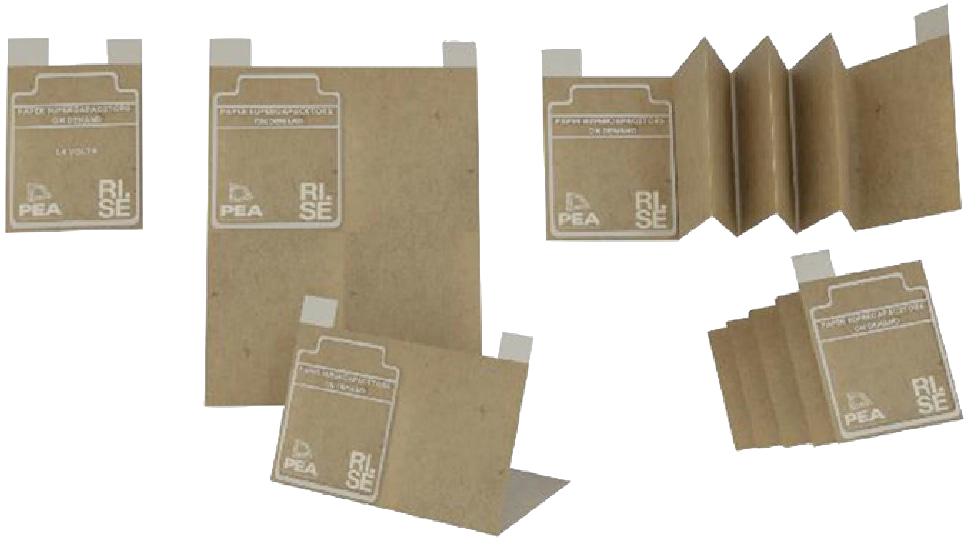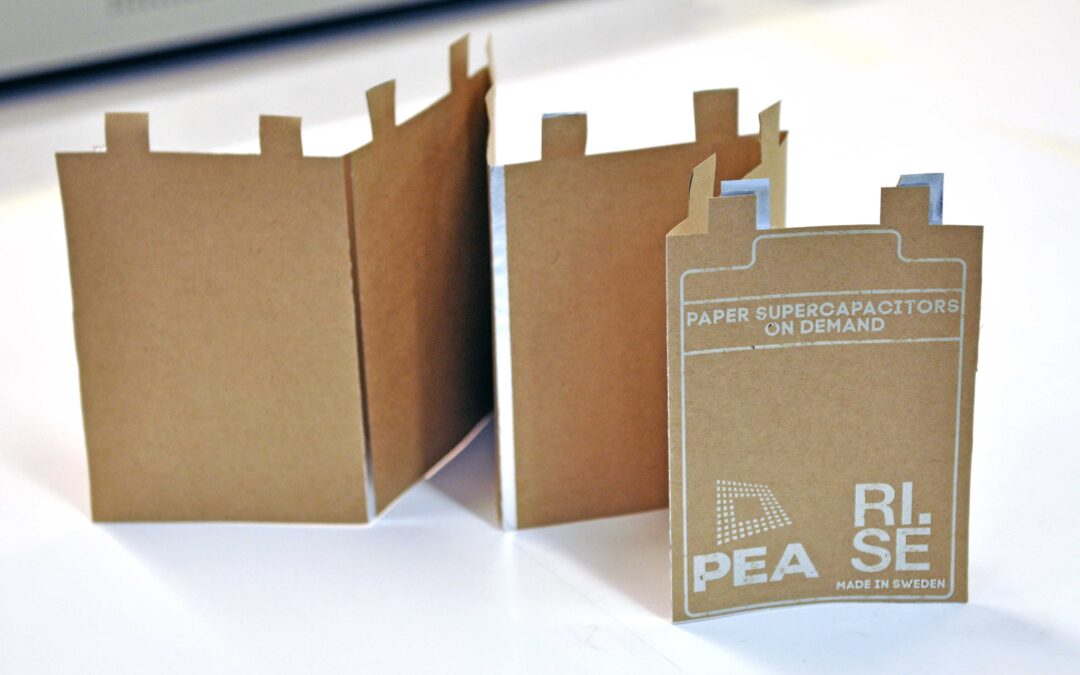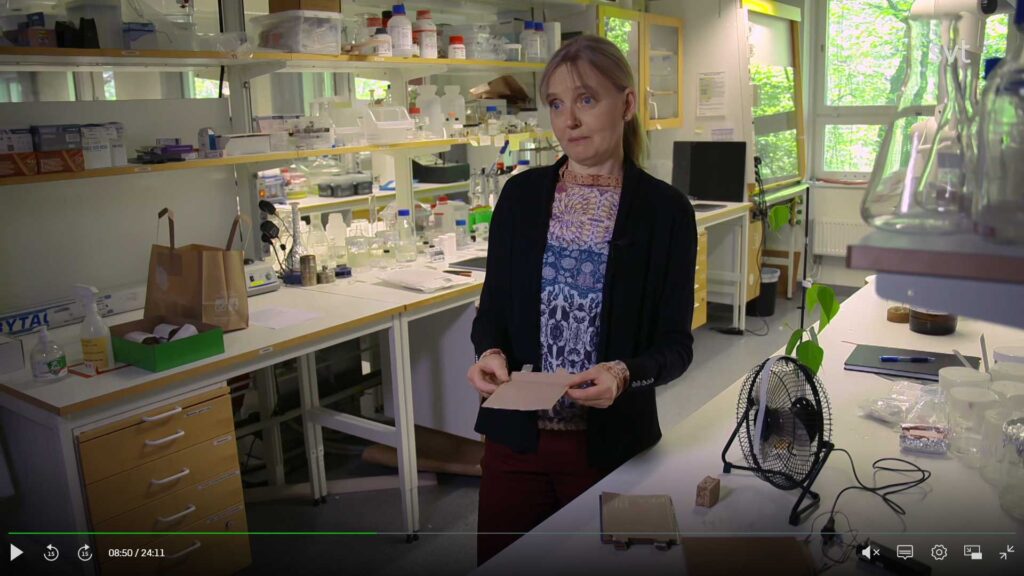Researchers from the Digital Cellulose Center have developed a paper supercapacitor that can store renewable energy on a large scale. New research shows that the energy storage capacity of the paper battery is as efficient as conventional commercial supercapacitors. In the future, the energy storage device could be used in the construction of buildings to store energy on-site sustainably as well as insulate it.
“The energy demand will only increase, and we need new technologies to store renewable energy sustainably,” says Dr. Jesper Edberg Scientific Leader at the Digital Cellulose Center and Researcher at RISE. “We aim to create sustainable, renewable, and reusable electronics, and this is a prime example of how we, in the near future, can create green storage for green energy.”
The future of renewable energy depends on our advances in energy storage technologies. One of the biggest challenges of storing energy on a large scale is fully utilizing the energy produced. Today we lack efficient methods for storing renewable energy, but researchers at the Digital Cellulose Center are making strides toward new sustainable solutions.
In a new study, researchers from the Center have further developed its printed supercapacitor by replacing the plastic substrates with paper, making it more sustainable. The new ‘on demand’ design for the supercapacitors can also increase the capacitance and voltage.
“The capacitance of the paper supercapacitor is approximately equivalent to commercial supercapacitors when normalized against volume,” says Dr. Jesper Edberg. “One of the advantages of the paper device is how they are manufactured, which we believe can lead to faster production. They are also thin, foldable, and bendable and can be integrated into new environments where the cylindrical-shaped, metal commercial supercapacitors do not fit.”
On-site energy storage of renewable energy
The papers are coated with aluminum, functioning both as the device’s current collector and as a barrier for moisture and oxygen.
“In the future, businesses and society will need to store energy on-site,” says Dr. Robert Brooke, Researcher at RISE Research Institutes of Sweden. “These energy storage devices could, for instance, be built into the walls of buildings to store energy locally from solar cells on the roof while at the same time functioning as insulation for the building.”
Renewable energy will need renewable storage
“We need to find alternative methods of storing energy,” Dr. Jesper Edberg continues. “Therefore, phasing out batteries and energy storage solutions that are dependent on fossil materials, critical materials, and rare earth minerals is an important step in creating a renewable energy ecosystem.”
The paper energy storage device has a new “on-demand” design. After the device has been screen printed, it can be cut and connected in specific ways to power applications. The manuscript, published in the Journal of Energy Storage, shows three different orientations to increase the capacitance and the voltage.
“If you have a small electronic device that needs minimal power, then you can use an individual sheet of the energy storage device,” says Dr. Robert Brooke. “But if you want to power something that needs more power, then you can connect a series of devices, or sheets, to increase the voltage or the capacitance.”
The new ‘on demand’ design for the supercapacitors allows for individual devices in addition to devices in parallel and in series to increase the capacitance and voltage, respectively. The individual device showed impressive capacity up to 10 F (Farad) while expanding the area with the large parallel device increased the capacitance to a record 127.8 F (332.8 mF/cm2). The ‘on demand’ design also allows paper supercapacitors to be in series to increase the operating voltage. An example device shows good charging behavior up to 5 V when four individual paper supercapacitors were arranged in series.

Watch the video below, from SVT’s Vetenskapens Värld, to see how the paper supercapacitor works:


